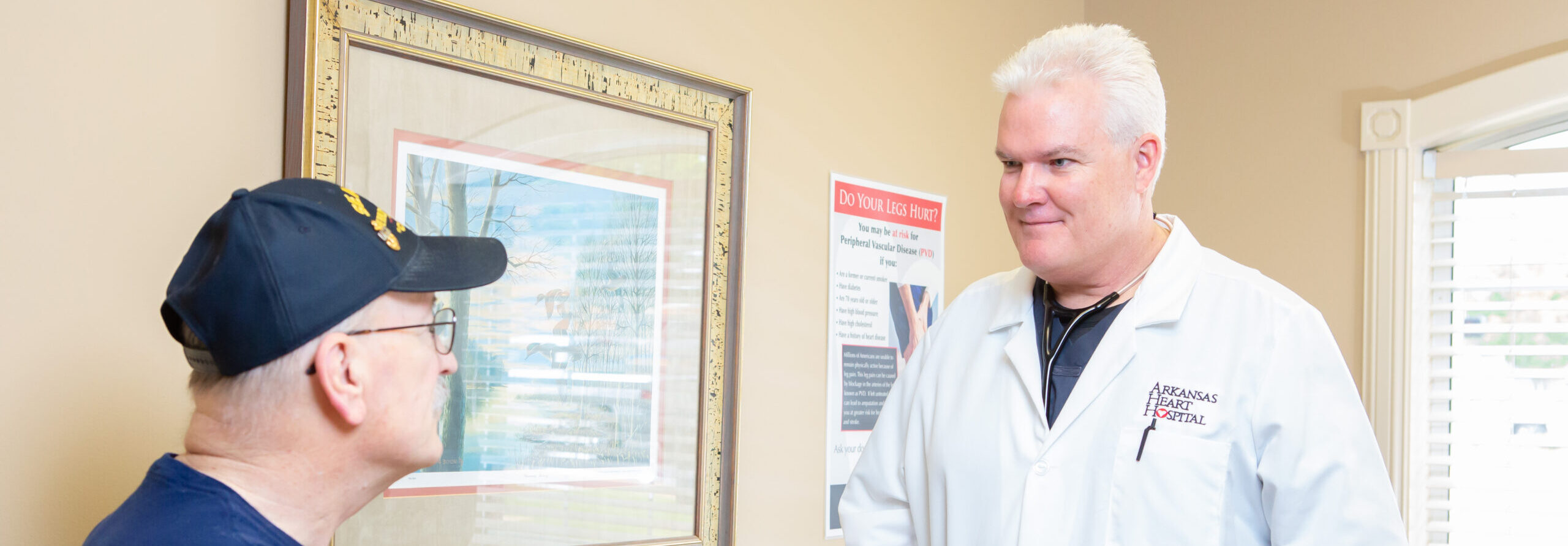
Cardiac catheterization, also known as a heart cath, is a valuable tool in the diagnosis and treatment of various cardiovascular conditions. It provides detailed information about the structure and function of the heart and allows for minimally invasive interventions to address specific cardiac issues.
Dr. Patrick Flaherty, interventional cardiologist, explains what happens during a heart cath procedure.
“A heart cath is how we make a roadmap of what is going on with somebody’s coronary artery tree,” he said. “We find an artery that has an open pathway to the heart, and we insert an intra-arterial line that will allow us to run a plastic tube known as a catheter either up the arm or through the femoral groin arteries that will be directed under x-ray to the coronary arteries.”
Once the catheter is in place, dye (contrast) is delivered through the catheter, and x-ray images are taken to visualize the blood flow.
“The contrast will replace blood flow for a very short period, typically a couple of seconds, and allows us to see if the flow is wide open or if there is a sudden obstruction to that flow where there is a blockage,” Dr. Flaherty said.
How Long Does a Heart Cath Take?
The duration of the procedure can vary but generally takes around 30 minutes to two hours, depending on the complexity of the case and whether any interventions are performed.
Who Needs a Heart Cath?
A cardiac catheterization procedure may be recommended for individuals who are experiencing symptoms or have risk factors for various heart conditions. Some common indications for cardiac catheterization include:
- Chest pain (angina)
- Heart attack
- Abnormal stress test or imaging results
- Heart valve disease
- Congenital heart defects
- Heart failure
It’s important to note that the decision to undergo cardiac catheterization is made based on individual patient factors, including symptoms, medical history, and results of other diagnostic tests. The procedure is typically recommended when the potential benefits outweigh the risks for the individual patient.
What are the Risks of a Heart Cath?
Like any medical procedure, cardiac catheterization carries some risks, including bleeding, infection, allergic reaction to the contrast dye, damage to blood vessels, and complications related to anesthesia. Your doctor will discuss these risks with you before the procedure.
How Long is the Recovery Time After a Heart Cath?
After the procedure, you will be monitored for a few hours to ensure stability. You may need to lie flat for a period of time to minimize the risk of bleeding from the catheter insertion site. Most patients can return home the same day but should avoid strenuous activities for a few days.
—–
We know how critical a healthy heart is to a healthy body. It’s through our highest expectations in quality and excellence through innovation that we’re able to keep our patients’ hearts healthy for years to come. Want to learn more about our patient-centered, specialized cardiac care? Discover our wide range of cardiac care services or ask your primary care provider for a referral today.
Learn what to expect before, during and after a heart cath at AHH.